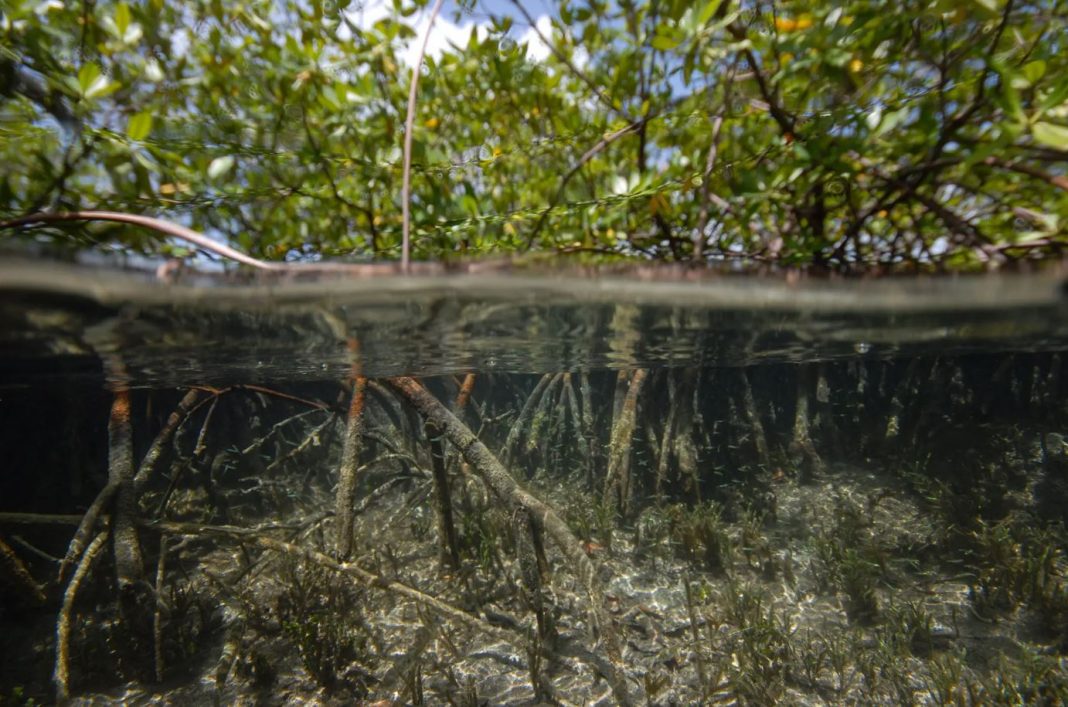Scientists have identified a kind of bacteria that can grow to the size and form of a human eyelash, and they found it in a mangrove forest in the Caribbean.
These cells are the biggest bacteria that have ever been seen, being thousands of times larger than bacteria that are more well known, such as Escherichia coli. According to Jean-Marie Volland, a microbiologist working at the Joint Genome Institute in Berkeley, California, the experience “would be like meeting another person who was the size of Mount Everest.”
On Thursday, the research that Dr. Volland and his colleagues conducted on the bacterium known as Thiomargarita magnifica was published in the peer-reviewed journal Science.
Once upon a time, researchers believed that germs were too basic to build complex cells. However, it turns out that Thiomargarita magnifica is rather difficult to understand. Due to the fact that the majority of the bacterial world has not yet been studied, it is absolutely feasible that there are bacteria that are much larger and more complicated just waiting to be found.
About three hundred and fifty years have passed since Antonie van Leeuwenhoek, a lens grinder from the Netherlands, discovered germs by scraping his teeth. When he examined the tooth plaque with a crude microscope, he was surprised to observe single-celled creatures moving about in it. Over the course of the subsequent three centuries, researchers discovered a great variety of new germs, many of which were unable to be seen by the human eye. For example, the size of an E. coli cell is around two microns, which is less than one ten-thousandth of an inch.
Because each bacterial cell is its own independent creature, it is capable of undergoing growth and eventually dividing into two new bacteria. However, bacterial cells often cohabit the same space. The surface of Van Leeuwenhoek’s teeth was covered with a layer that resembled jelly and contained billions of microorganisms. Some of the bacterial cells that live in lakes and rivers will clump together and create very thin filaments.
We humans are multicellular beings, and our bodies are comprised of around 30 trillion different cells. Although the cells that make up human bodies cannot be seen with the naked eye, they are normally far bigger than the cells that bacteria contain. A human egg cell may have a diameter of up to around 120 microns, which is equal to about five one-thousandths of an inch.
As the divide between tiny and large cells became more apparent, researchers turned to evolution in an attempt to make sense of the data. The evolutionary branch known as eukaryotes includes all eukaryotic organisms, including animals, plants, and fungus. Eukaryotes have a number of similar traits that allow them to produce large cells. The researchers came to the conclusion that bacterial cells required to remain relatively tiny in order to survive without these changes.
Eukaryotic cells are packed with minuscule compartments that allow for many types of biochemistry to take place. This was the answer that eukaryotic evolution came up with to solve the challenge. They store their DNA in a sac known as the nucleus, along with molecules that can read genes to generate proteins. When a cell reproduces, either the molecules or the proteins produce new copies of DNA. Each cell makes fuel within pouches called mitochondria.
When the researchers used electron microscopes to examine the inside of the bacterial noodles, they discovered that each one had its own own enormous cell. The length of an average cell was around 9,000 microns, but the longest cell was 20,000 microns; this length was sufficient to cover the width of a cent.
The research on Thiomargarita magnifica has been moving at a snail’s pace due to the fact that Dr. Vallant and his colleagues have not yet figured out how to cultivate the bacteria in their laboratory. For the time being, whenever the team wishes to conduct a new experiment, Dr. Gros is required to collect a new supply of the bacteria to use. Not just on leaves, but also on oyster shells and plastic bottles that have been embedded in the sulfur-rich sediments of the mangrove forest, he is able to locate them. On the other hand, the life cycle of the bacterium seems to be completely random.
The researchers have uncovered a strange and intricate structure deep inside the cells of Thiomargarita magnifica. Their membranes are embedded with several distinct types of compartments of varying sizes and shapes. Although the compartments in Thiomargarita magnifica are not like those in our own cells, it is possible that they enable the organism to reach enormous sizes.
Additionally, the Thiomargarita magnifica possesses additional compartments that have a startling resemblance to human nuclei. Each of the compartments, which the researchers name pepins after the little seeds that may be found in fruits like kiwis, is home to a loop of DNA. In contrast to the usual bacterial cell, which has just one DNA loop, the cell of Thiomargarita magnifica contains hundreds of thousands of DNA loops, each of which is tucked away in its own pepin.

